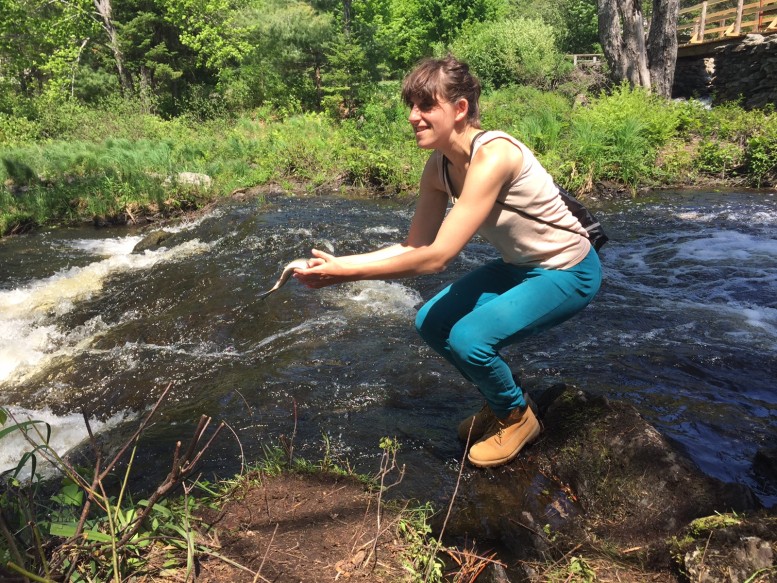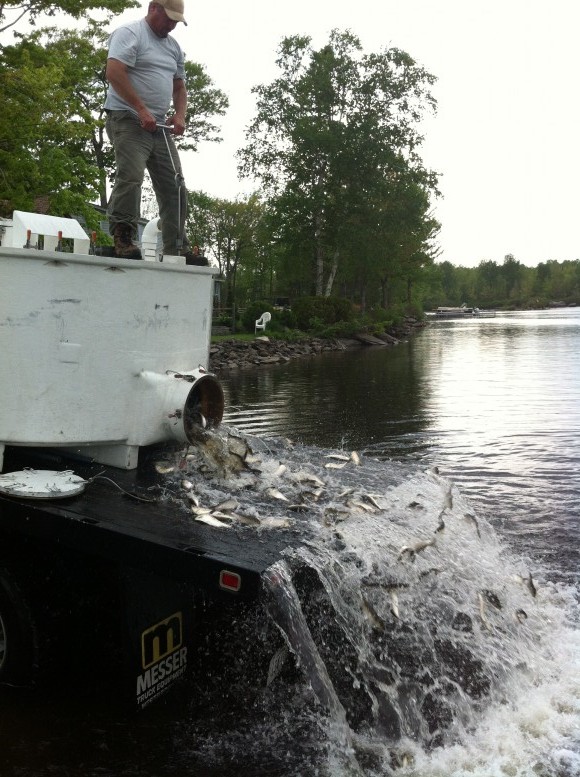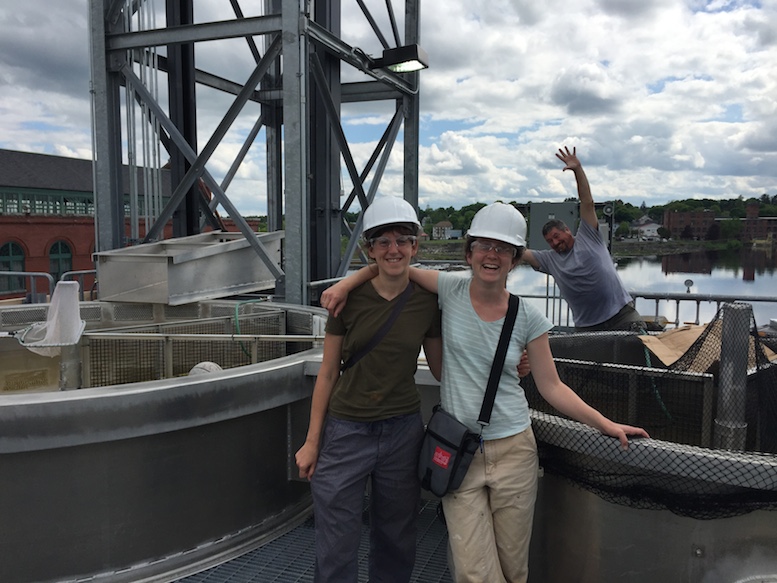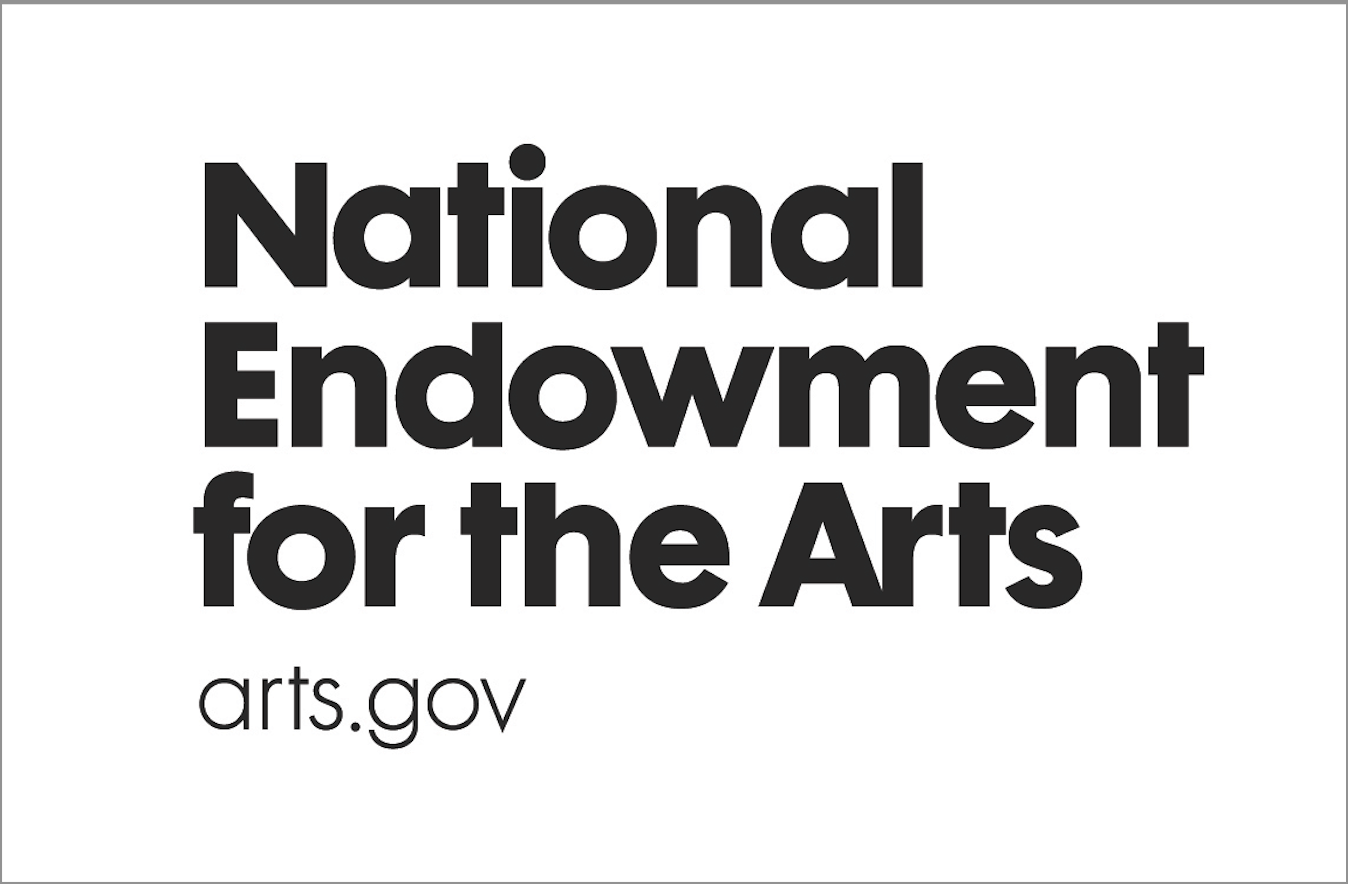Jennie Hahn, artistic director of the Open Waters performance collaborative, writes to tell me she is working on a new community-based performance project. She wants to work on a river — specifically, the Penobscot River, which, together with its tributaries, drains one-third of her home state of Maine. One year of research will be followed by multiple years of engagement with partners and community members in the “head of tide” area, just above Bangor, where the tide no longer exerts influence. Would I be able to come to Maine at the end of May to participate in a combination of research and direct action at the end of May, she asks me. Of course I say yes.
“How do I make the work that I need to make while still authentically involving community?”
This is the stage of an investigative process that the breadth of possibility makes most lonely, scary, and thrilling. Which decisions will form the project’s skeleton? Several times we talk over Skype, identifying questions and artistic priorities as we prepare for the weekend of research. We plan to spend three days in the field and one day working together on an artistic response. Jennie writes, “I am endlessly motivated by a desire to ensure that every stakeholder has a voice in choosing the future of her sacred places. But I also need to maintain my own connection with the replenishing life force of my homeland.” Or, as she puts it to me, “How do I make the work that I need to make while still authentically involving community?”
Before our research weekend, we share the work of other artists who do this in ways we find interesting (I point Jennie to Maggie Nelson’s “Jane: a murder,” and she sends me to Emily Johnson and Catalyst Dance). After our three days in the field, we settle on Yoko Ono-inspired performance scores as a form that satisfies Jennie’s priority of performance and mine of writing. The scores, which are short texts that can act as seeds from which a reader could grow a performance or other artistic response, will ripple outwards from the two of us with a life of their own, mirroring the scale and unpredictability of the river to which this project is committed to listening. Drafts of a handful of these scores pepper the text below.
Writing now about the weekend and our findings, I’m drawn back to three questions identified in our early conversations. Investigative art-making is as much about the nets we fashion as it is about what we catch with them. Below, I use these questions as guides to sort through some of our attempts to answer them.
1. How do we stay open to possibilities of form in project design and in artistic product?
Shoal: A Score for Ten Performers
Instructions: Determine an origin and a destination without discussing your route. Travel together from origin to destination without speaking or using your hands to gesture. Always remain in close proximity to your companions and try not to lose anyone.

Cory Tamler holding an alewife. Photo Credit: Jennie Hahn.
In making a project that takes the Penobscot as its spine, Jennie is entering a complex conversation about ownership and environment, recreation and heritage, race and access. She’s learning about dam removal, the Penobscot Nation, and sports like boating and fishing. The number of communities touched by the river will divide the project into natural intertwined phases.
This weekend we’re focusing on migratory fish restoration in the river. For most of it, we will shadow a marine biologist, Richard Dill, at the Milford Dam between Old Town and Milford.
“What do you two want to see?” he asks several times throughout the day.
“We just want to see what your normal day is like,” we answer. We don’t know enough yet about the structure of Richard’s work to impose our own structure on it.
First things first: we watch a safety video with twitchy red and blue lettering — like computer graphics from the 90s — and Richard fills out a job safety plan (JSP) that lists all of our activities for the day.
We observe Richard watching fish through a window as they swim upstream. A mess of buttons and levers on the concrete wall lets him control a series of doors and the hopper, the fish elevator that travels to the top deck to deliver salmon for tagging.
Later, we watch the tagging. It’s a multi-person operation, and we ask if we can join in.
I write that evening, in my notebook:
“today, I held a live and conscious salmon inside of a stitched rubber sack
while a state biologist with a grip on her tail fluidly
stabbed a thick syringe into her back, injecting a tag;
scraped scales from her side and slid them into an envelope;
punched a hole in the meat of her fin and dropped the round bit of salmon confetti into a test tube.
then he pulled her out and
I helped to press her eight-pound body against the metal wall of the holding tank to keep her from injuring herself with thrashing
while a radio tag the size of a double-A battery is shoved through her mouth and into her stomach.
the fish are feistier when the water is warmer and she bucks a lot.
she is strong.
everybody’s in the splash zone.”
We pick up dam and biologist jargon: “JSP;” “PPE,”for hard hat and goggles; “recap,” for a salmon they’ve captured previously; and “baffles,” for the wooden gates that help modulate the flow of water through the fish passage. Holding a salmon against the side of the tank, Mitch Simpson from the Maine Department of Marine Resources (DMR) calls out stats and measurements to be recorded: “Female, seventy, one and two. Laceration on right side and peduncle.”
In the afternoon, Richard takes us to the Blackman Stream passage. He points to the water, and we’re not sure what we’re supposed to see. Then, like a Magic Eye puzzle, they pop out at us: alewives (also known as river herring) swirling thick in the stream below. Why weren’t they visible to us before? Jennie marvels at the way Richard sees what we cannot because we don’t know what to look for yet.
Jennie sees the project as a string of artistic actions that will evolve over time in response to the needs of each individual community partnership. Performance is the aesthetic priority, but the ideal is to stay open, which feels right but makes building new partner and artist relationships difficult. Even intentional openness can make you seem disorganized.
What we both feel, and what the first day in the field confirms, is that if you make decisions before you know what to look for, you are bound to miss a lot.
2. How do we, as humans, listen to non-human community members?
Kinship: A Score for One Performer
Instructions: Imagine yourself a very small child. Imagine you are holding a living fish in your hands. What happens next?
I stand in ankle-deep water, my stance pounce-ready. Cars rush and whine on the roadway above us. There’s no indication from above that if you climb down from the guardrail, you’ll find a fish passage flush with alewives — alewives that are confused, like a lot of fish are at man-made passages. The fish know which way is upstream by the speed and the strength of Blackman Stream, although its signal is so strong that most of them can’t seem to find the actual fish passage, a ladder of concrete and wood built to let them bypass an otherwise insurmountable barrier.
We have decided on a lens for this second field day: capturing the stages of the alewife journey upstream. We watch as alewife after alewife breaks loose from the school swirling in the deeper, stiller water and flings itself into the shallow rapids. They’re attempting the impossible. The water is too shallow, even for the ones who are tough enough to fight the current. We watch as the rapids overpower them and carry them back downstream.
For the past century, human-made dams have substantially altered the flow of the Penobscot, a river that once “ran silver” with migrating alewives. The work of the marine biologists here aims to mimic the natural signals migratory fish once followed before the dams. Richard and his team have to think like the fish they trying to guide through the river. I reach into the water and pull an alewife from its world into mine. Then I release it into the fish passage. I write that night:
“of the tens of thousands of salmon Richard has handled in his career, he says, he’s only been directly responsible for the deaths of, maybe, six
maybe the one he injured this morning will live. in the larger tank, Mitch
took her body in his hands
held it upright,
pointing her nose into the water flowing into the tank, pumped up from the Penobscot below.
the moving water seemed to refresh her. when he released his hold on her,
she flipped her tail a little, swam around in proper healthy fish orientation
for fifteen seconds before flopping back helplessly onto her side.
‘come on, sweetheart,’ Mitch said, and held her nose to the water again
like smelling salts
like apple juice when your blood sugar is low.”
3. How do we make sure that project partners and collaborating artists reflect the many voices and communities touched by the Penobscot River?
Food Chain Letter: A Score for Infinite Performers
Instructions: Give a friend or an acquaintance a story about fish. Then, tell their friend to give both your story and theirs to one of their friends or acquaintances. This process can continue ad infinitum.

Mitch Simpson from the Maine DMR releasing alewives into Pushaw Lake. Photo Credit: Cory Tamler.
During car rides and over meals, we process the weekend and discuss bigger project concerns. We keep coming back to the question of diverse voices. It’s clear that the Penobscot Nation needs to be one of the voices represented, as a partner and from within the artistic team. But Jennie doesn’t have preexisting connections to the tribe, and there’s no shortcut to creating the kind of trust and mutual investment that will lead to bringing the tribe’s voice in. “Sometimes,” she says, “I shouldn’t be the one starting the conversation.”
On my third and final day with Jennie, we wander around the first annual Alewife Festival at Leonard’s Mills, rubbing shoulders with a who’s who of the migratory fish restoration and dam removal world. Richard looks official in his Department of Marine Resources uniform. He introduces us to some of the other name-tagged volunteers, among them representatives of the Penobscot River Restoration Trust and the Maine Forest and Logging Museum, and then we split off to work up the courage to ask strangers to tell us about a moment of connection with fish. Some festival visitors are bewildered. Some, even a graduate student of marine biology, can only thinking of examples related to fishing. One woman laughs, then tells us about the bucketfuls of sunfish she’d catch as a child. She liked the way they glistened and moved. She liked to show them to her friends and then release them.
All this time, a little girl sits in the water where the alewives are the thickest. Over and over she reaches into the stream, pulls out an alewife, strokes it, holds it to her cheek, and then tosses it back to continue its journey.
The timeline for an expansive process that depends on developing meaningful community partnerships must be flexible. Jennie plans to continue working on the project at least through 2017, with the expectation that she will need to re-evaluate as it unfolds. She completed a second research action in July, during which she was encouraged more than once by tribal members to enter a space or participate in a conversation or ritual. Such moments of genuine invitation — signs of trust and budding partnership — indicate that the current is flowing in the right direction.
Post Views:
1,964




